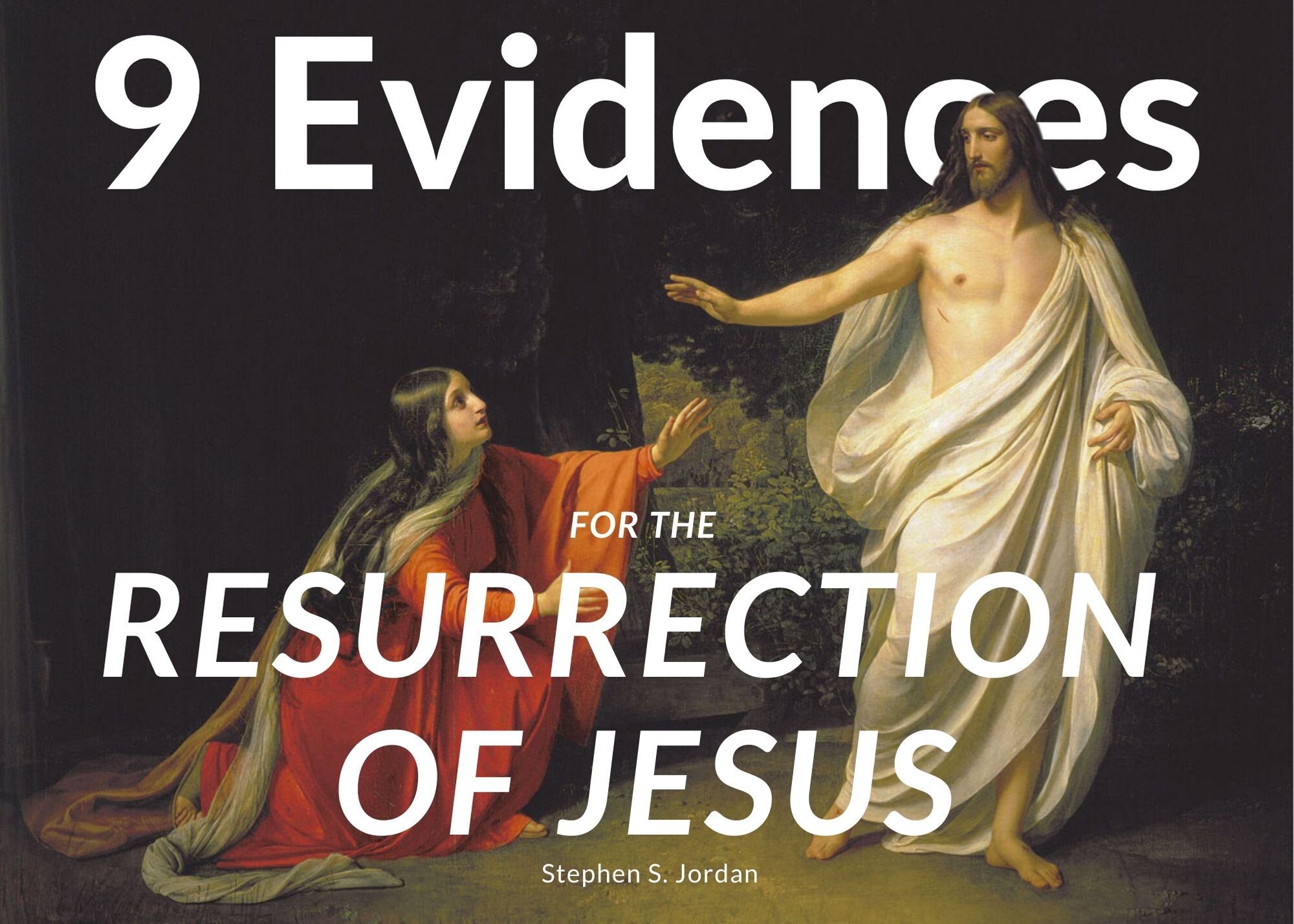He Appeared to Me
/Who saw what? How did the sight change their lives? On the third day after His burial in a garden tomb in Jerusalem, Jesus began appearing to numerous people. Consider His appearances to just three persons: the betraying disciple Peter, the skeptic James, and the unbelieving rabbi Saul. How were each of these lives radically altered?
Around 30 A.D., Jesus Christ died in Jerusalem and three days after His burial people report seeing Him alive! The first century historian Josephus says, “He appeared to them alive again the third day.” The apostle Paul collects these appearances and reports them in his 1 Corinthians letter. Paul concludes Jesus “was raised on the third day in accordance with the Scriptures.…” The apostle lists some of those who saw Him. Let me note just three of them.
The apostle Paul says Jesus “appeared to Cephas” (Peter). The actual word “appeared” means “catch sight of” and “see with one’s eyes.” The text makes clear Peter saw Jesus with his own two eyes. This makes Peter an eyewitness. Eyewitnesses give direct, first-hand evidence. First-hand evidence demonstrates a fact by being involved personally in the event. Eyewitnesses witness what happens as it happens. Attorneys attest that a credible eyewitness testimony often wins the jury. Clint Eastwood’s film, The Gauntlet, dramatizes the magnitude of an eyewitness. The alcoholic police officer Ben Shockley, played by Clint Eastwood, goes through a death-defying maelstrom to deliver a material witness, Gus Mally (Sandra Locke), to the Phoenix courthouse alive. The report of Jesus’ resurrection is eyewitness testimony.
Eyewitness Peter is a “what-you-see-is-what-you-get” kind of person. Not subtle, but direct, transparent, open, and frank. Early on, he tells Jesus he’s not the kind of guy Jesus wants to hang with. “Leave me, Lord, for I am a sinful man!” says Peter. When Jesus is questioned by Caiaphas, Peter sits by the fire in earshot of the proceedings. Several servant-girls say to Peter, “You also were with Jesus the Galilean.” Peter curses and three times says, “I do not know the man!” Peter is afraid. If he acknowledges Jesus, the high priest will be after him. So, he denies the Messiah he once confessed. Then the rooster crows.
Sometime later, something happened to Peter. This once guilt-ridden Peter afraid to associate himself publicly with Jesus stands up at the festival of Pentecost before thousands of Jews and says, “Jesus of Nazareth ... you crucified and killed … but God raised him up…” (Acts 2:22-24). Luke and Paul solve the riddle: the living Jesus appeared to Peter. The early church father Clement knew Peter personally. Clement says after Jesus appeared to Peter, Peter’s confliction was gone. With the Holy Spirit’s empowerment, no longer was Peter the coward, but Peter the courageous! Our risen Lord appeared to Peter!
There is another eyewitness. In 2002 archaeologists discovered a first century ossuary box, a box containing a dead person’s bones. This first century limestone, bone box has an Aramaic inscription on it, “James, son of Joseph, brother of Jesus.” Scholars debate its authenticity. No matter, Jesus of Nazareth had four brothers, one of whom was James. Early in His ministry, Jesus travels with his mother Mary and his brothers, including James. But Jesus does not win James over. Differences arise between Jesus and James. Anybody can get away with claiming to be a Messiah in rural Nazareth. “If you do mighty works, show yourself to the world,” they say mockingly to Jesus. Prove yourself in D.C., not Tight Squeeze, Virginia! His family seems almost embarrassed by Jesus as the word around Nazareth is that Jesus is unhinged, “gone out of his mind.” John’s Gospel comments, “Not even his brothers believed in him” (John 7: 6). Jesus goes to his grave with his hostile brother James a skeptic.
But something happens to brother James. The next thing we hear James is on his knees praying. Ancient testimony says James is so frequently found in the temple on his knees begging forgiveness for people that his knees are as hard as a camel’s. James’s new name is “James the Just,” the recognized head of the Jerusalem church. Even Paul reports to him. How does skeptical brother James become a believer? The apostle Paul clues us in: Christ “was raised on the third day according to the Scriptures … and then he … appeared to James…” (1 Corinthians 15: 7). Our risen Lord appears to His own brother!
Why is James called upon by the scribes and priests? The priests ask him to persuade the Jewish people not to follow to Jesus. Tradition is that James stands at the top of the temple, and proclaims instead, “Jesus is the Messiah, the Son of God, the Savior.” Rushing upon him the priests push him off the temple tower. The fall does not kill him. So, they finish him off by stoning him to death. Eyewitness appearances of our risen Lord Jesus are the game changers! James the skeptic becomes James the Just.
Paul mentions one last appearance of the risen Jesus. A Jerusalem rabbi, Saul, leads the charge to bring upstart Jews enamored with Jesus back into the fold. Saul is a single-minded, driven, high achiever. A contemporary of Jesus’ apostles, at an early age he is steeped in Old Testament law. By age thirteen, the Jewish scholar Gamaliel tutors Saul. Gamaliel is the Alan Dershowitz, Harvard law professor of the day. Saul’s zeal surpasses his peers. He kills for the Law.
Taking a leading role in bullying the church, Saul goes to Christian homes and hauls disciples – even women – to prison. Saul admits, “I was violently persecuting the church of God.” I “was trying to destroy it” (Galatians 1: 13). He takes satisfaction in preacher Stephen’s stoning, holding others’ coats, so they could throw stones (Acts 8:1).
Suddenly, something happens to Saul. People say, “He who formerly was persecuting us is now proclaiming the faith he once tried to destroy” (Galatians 1:23). “Is not this the man who made havoc in Jerusalem…?” (Act 9:21). Now called “Paul,” he argues that Jesus “is the Savior, the Son of God,” the crucified Messiah who was raised on the third day (Acts 9:22). Though beaten with rods, stoned, shipwrecked, in dangers from rivers, robbers, rioting mobs, Roman governors, tribunals, and even Caesar himself, he continues to testify Jesus “appeared to me.”
What happened to Paul? Paul answers in his testimony. At midday as he travels to Damascus, a brilliant light, brighter than the sun, surrounds him. A Voice speaks to him, “Saul, Saul, why are you persecuting me?” (Acts 26: 14). Paul asks, “Who are you, Lord?” “I am Jesus, whom you are persecuting” (Acts 9: 5). Seeing and hearing the resurrected Lord Jesus Christ, Saul becomes Paul.
After his burial, the risen Jesus appeared to … Peter … James … Saul and hundreds more. This first-hand, eyewitness evidence is conclusive. Fiction did not transform Peter; legend did not change James; and myth could not convince Saul; only, “he appeared to me.”
***************************































